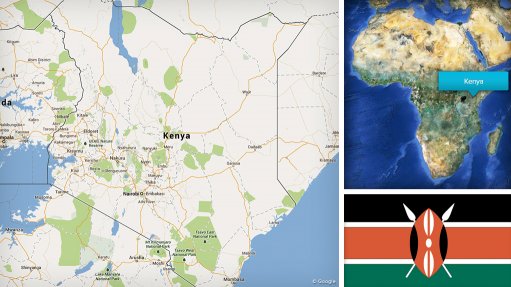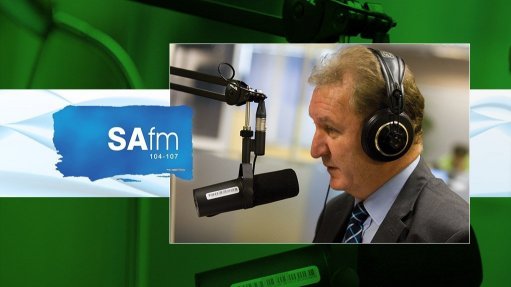Energy transition offers once-in-century potential for South Africa to reindustrialise


Trade and Industrial Policy Strategies senior economist and South African Renewable Energy Masterplan facilitator Gaylor Montmasson-Clair
The global and local renewable energy transition is presenting industries, and South Africa, with a once-in-a-century growth trajectory to provide products and components into the value chains of renewable energy and battery energy storage systems (BESSs).
During the second quarter of 2023, more than $1.7-billion worth of solar panels, inverters and lithium-ion battery systems were imported into South Africa, and this number excludes other components and parts.
Further, the National Energy Regulator of South Africa registered 4.5 GW of private energy projects in 2023, economic research nonprofit Trade and Industrial Policy Strategies senior economist and South African Renewable Energy Masterplan facilitator Gaylor Montmasson-Clair pointed out during a media discussion on January 24.
Similarly, while solar photovoltaic has seen a gradual evolution, there is an almost 5% to 6% growth a month on average over the past two years, even when the second quarter of 2023 is removed from the model.
"This is a once-in-a-century growth trajectory. It is not often that we see a sector grow globally as the renewable industry is growing now, and South Africa has the capability to play a role," he emphasised.
The global energy transition, which is under way, presents a once-in-a-lifetime opportunity to reindustrialise and South Africa should take note of that, concurred manufacturing competitiveness consultancy BMA Analysts battery energy storage research and sector lead Mbongeni Ndlovu.
They and other researchers spoke during the presentation of manufacturing support nonprofit the Localisation Support Fund's (LSF's) 'Local manufacturing capability and capacity for parts or component used in the renewable energy sector' study.
The study provided insights into how South Africa can use the transition to boost manufacturing by making components and parts locally.
The study also highlighted that many South African industrial companies have surplus capacity and can ramp up production to meet demand, noted BMA Analysts consultant O'Neill Marais.
"However, while they may have excess capacity, the problem South African companies face is competitiveness. For example, it is cheaper to import steel for the wind energy industry than to source it locally, and this uncompetitiveness is hampering companies' ability to scale up.
"If we can answer the competitiveness question, there is capacity that is standing idle, such as being able to produce the nose hubcaps for wind turbines, which are large, cast pieces," he said.
Small and medium-sized manufacturers in South Africa have adopted alternative power sources, including diesel and gas generators, and some solar and battery energy storage to mitigate the impact of loadshedding. However, larger energy-intensive industrial companies have had to conduct one-to-one negotiations with power utility Eskom to continue to operate, said LSF technical consultant Ross Boyd.
Despite these headaches, manufacturers the team spoke to for the study were confident they could ramp up, but this meant they had to invest now to safeguard against the impacts of loadshedding. Many have done so and are dealing with the headwinds, noted BMA Analysts researcher Kate Carstens.
RAMP-UP
The study identified the capacity and capabilities present in South Africa's industrial sectors required to competitively manufacture components and parts for the renewable energy industry.
It then highlighted five focus areas to ramp up production to meet demand, with the first, and most crucial, being consistent demand for the systems, parts and components from markets, including the public and private sectors.
"To support local manufacturing of components and parts used in renewable energy and BESSs, South Africa must add 3 GW of renewable energy and battery storage each year, ramping up to 5 GW a year as we approach 2030," Montmasson-Clair said.
Further, while there is great need for energy in Southern Africa, there is limited demand for renewable energy systems, and South African companies should aim to supply the demand in the country, and hence the need for consistent demand.
However, some local companies were successfully supplying renewable energy components and products into high-demand markets, such as Europe and North America, he noted.
Additionally, to ramp up local production of renewable energy parts and components, the study found that South Africa must align quality expectations and standards, and improve local testing and certification, said Boyd.
"In the solar value chain, South African companies have excess capacity to produce low- and medium-voltage cables, but a lack of quality requirements and standards means that cheaper imports are coming into the country.
"Standards and greater specification of quality requirements will protect local manufacturers of low- and medium-voltage cables from imports, as many of these imports are lower quality than locally made cables and may present a hazard in a finished installation," he highlighted.
Linked to this, South Africa must review and monitor duty levels for imports of renewable energy and BESS components, and apply and enforce the correct duties on imports, said Boyd.
However, local fastener manufacturers were already supplying into the solar value chain and they should grow and there were further opportunities for them from solar, he added.
Further, the study recommended that the local ecosystem of manufacturers be upgraded and improved.
The three main areas of focus that the study highlights include, firstly, creating demand consistency. Public demand can be created through the Integrated Resource Plan, and by enforcing local procurement standards across departments, agencies and municipalities.
Further, private demand had the greatest degree of uncertainty, yet was poised to be a significant driver of growth, said Boyd.
The second area of focus is protecting the market through duty protection and the correct application of duties.
Additionally, South Africa must put in place a minerals policy for the renewable energy and battery storage value chains, he said.
"South African companies are supplying and making various battery technologies, although the lack of local intellectual property means that the most immediate opportunities for the lithium-ion value chain lie downstream, such as assembly of modules, manufacturing casings and battery management systems.
"There is also another opportunity in the existing industries to provide precursor battery-grade manganese into the renewable energy and battery storage value chains, and the study also looks at how South Africa can leverage its mineral resources to boost local new energy manufacturing," he said.
The third focus area the study highlights is enhancing competitiveness through the provision of appropriate support.
This requires clarity on standards and upgrading the requirements of projects. Local testing and certification facilities must also be considered, although these may be located within companies and must be considered on a case-by-case basis, he added.
"Manufacturers know that their role is to be as competitive as possible and to meet required standards and price their products as competitively as possible, but they need support and consistency in standards," Boyd said.
CONSISTENCY
Meanwhile, renewable energy and battery storage industries cannot grow if South Africa continues with its stop-start practices of adding renewable energy.
For example, after adding wind and solar energy each year from 2013, no wind power at all was added in 2018 and 2019, and almost no solar power was added during 2022, emphasised Montmasson-Clair.
Some companies set up to make and build renewable energy systems had since folded, and it would be very difficult to convince wind energy system manufacturers to invest in South Africa, he noted.
"When we are thinking about building the value chain, we need to start where we are. What we need to break away from is the stop-and-go addition of new solar, wind and battery energy storage capacity," he said.
"Consistent demand is the key lever. To drive the industry, we must investigate the renewable energy industry and how it feeds into the rest of the economy and, irrespective of whether it is centralised or decentralised, this is the business we have to focus on," said Ndlovu.
"We need structural change in how the economy operates, and this is a great opportunity."
Comments
Press Office
Announcements
What's On
Subscribe to improve your user experience...
Option 1 (equivalent of R125 a month):
Receive a weekly copy of Creamer Media's Engineering News & Mining Weekly magazine
(print copy for those in South Africa and e-magazine for those outside of South Africa)
Receive daily email newsletters
Access to full search results
Access archive of magazine back copies
Access to Projects in Progress
Access to ONE Research Report of your choice in PDF format
Option 2 (equivalent of R375 a month):
All benefits from Option 1
PLUS
Access to Creamer Media's Research Channel Africa for ALL Research Reports, in PDF format, on various industrial and mining sectors
including Electricity; Water; Energy Transition; Hydrogen; Roads, Rail and Ports; Coal; Gold; Platinum; Battery Metals; etc.
Already a subscriber?
Forgotten your password?
Receive weekly copy of Creamer Media's Engineering News & Mining Weekly magazine (print copy for those in South Africa and e-magazine for those outside of South Africa)
➕
Recieve daily email newsletters
➕
Access to full search results
➕
Access archive of magazine back copies
➕
Access to Projects in Progress
➕
Access to ONE Research Report of your choice in PDF format
RESEARCH CHANNEL AFRICA
R4500 (equivalent of R375 a month)
SUBSCRIBEAll benefits from Option 1
➕
Access to Creamer Media's Research Channel Africa for ALL Research Reports on various industrial and mining sectors, in PDF format, including on:
Electricity
➕
Water
➕
Energy Transition
➕
Hydrogen
➕
Roads, Rail and Ports
➕
Coal
➕
Gold
➕
Platinum
➕
Battery Metals
➕
etc.
Receive all benefits from Option 1 or Option 2 delivered to numerous people at your company
➕
Multiple User names and Passwords for simultaneous log-ins
➕
Intranet integration access to all in your organisation



















